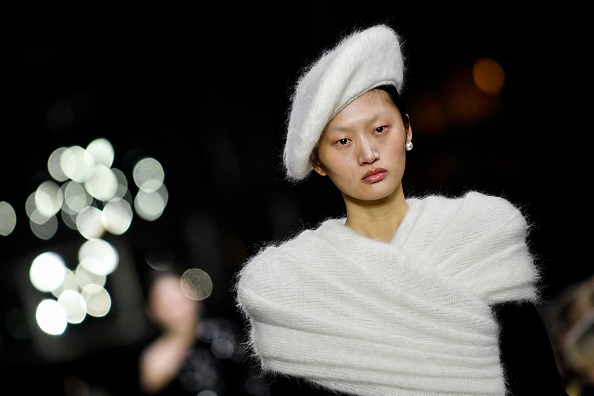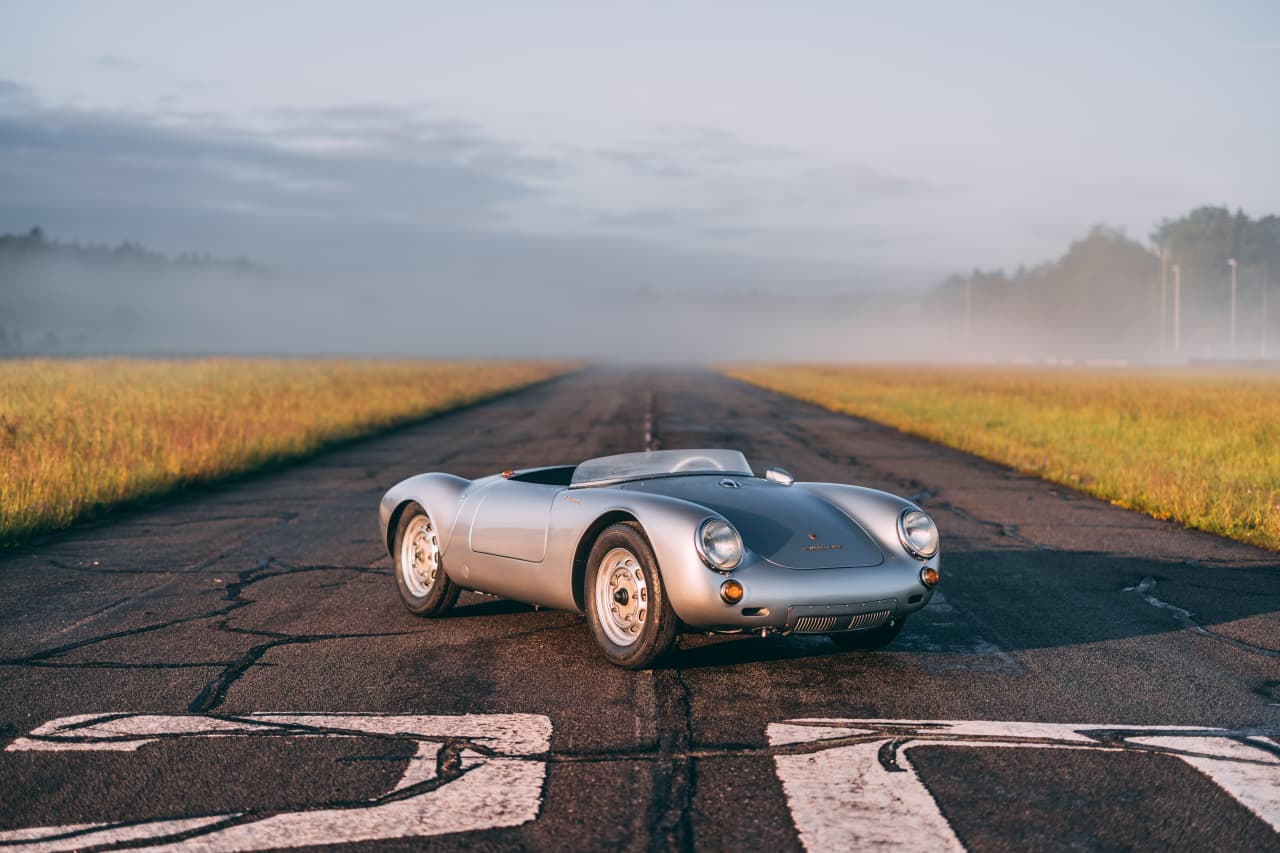The Return of the Dry-Clean-Only Wardrobe
Organza blouses, cashmere overcoats and tailored skirt suits: Fashion’s Paris forecast signalled an end to washable WFH-wear
PARIS—With the frisson of a downturn in the air, designers at fashion week here better known for drama battened down the hatches, sending out streams of polished, functional blouses, jackets, skirts, pants and pumps.
Above all, however, they sent coats. Some highlights: strictly cut propositions at Givenchy and Alexander McQueen, luxe puffers at Schiaparelli, and today’s belted, no-tricks camel-coloured overcoats at Louis Vuitton. Liane Wiggins, head of womenswear at British retailer MatchesFashion, praised Paris Fashion Week’s notably beautiful coats in an interview and rated them the “number-one investment” for customers who, in a change from their usual habits, might be choosing between luxuries this year.
And those buying habits are indeed changing. At a dinner for his independent Vienna-based brand, Petar Petrov told me that his clients are no longer searching for the comfort-forward attire of post pandemic life. Instead, women are again craving silk dresses and blouses, things to be worn to appear soignée at work, dinner, on dates (and then dry-cleaned… unthinkable in 2020).
Button-up blouses, a neutral palette, androgynous coats—if it sounds familiar, that may be because Lydia Tár pretty much foretold the fall collections. Although Cate Blanchett’s problematic composer in the Oscar-nominated movie “Tár” was not exactly an aspirational figure, her impeccably tailored wardrobe resonated well beyond the film.
Ms. Wiggins said this season was all about “more tailoring, cleaner looks and what I always call ‘real clothing’—but with added value and details that mean you will have it in your wardrobe forever, and it won’t feel too trend-heavy.”
Here, five brands that made persuasive cases for “real clothing”:
Loewe: Where ‘innovation’ is not just a buzzword
Jonathan Anderson, the designer behind Spanish LVMH brand Loewe, is one of the rare designers who uses innovative techniques and materials to make clothing that is supremely wearable. Without last season’s dependence on surreal elements such as exaggerated anthurium-flower tops, the fall collection focuses on more realistic pieces, like long leather coats and proper trousers.
That realism was imbued with tireless experimentation—the kind that people who love clothing will want to pay for. The seemingly simple silk printed dresses were printed with faded images of dresses from decades past, giving the contemporary pieces a sense of history. Shearling coats were moulded into hourglass shapes. Cropped leather jackets and skirts were vacuum-stiffened into firmness.
Mr. Anderson also excels when he considers and updates familiar and functional pieces—like last season’s Barbour jackets, or this season’s work boot. The Loewe representative who took me around the showroom said that the house’s employees—both men and women—were all excited to wear fall’s comfortable work boot, with its large toe box and nubbly texture.
Balmain: An approachable elegance
In recent seasons, the Balmain show has been an over-the-top spectacle bringing together thousands in stadium-style shows, often with live music. Last season, a raised runway showcased nearly 100 looks, Cher sang and there was a hamburger stand. The styles—as befits a brand beloved by Beyoncé and the Kardashian sisters—prioritised drama, including wide hats and sculpted pieces in unorthodox fabrics like banana leaf. But the show was late and chaotic, and attendants complained (a Vogue reviewer bemoaned his soggy bottom).
So this season the brand swung back to basics, or as close to basics as Balmain gets. In an interview, creative director Olivier Rousteing stressed the importance of looking to the house’s founder Pierre Balmain’s “legacy, and the power of the distinctive tailoring, structure and spirit behind his ‘New French’ style.” The term “New French” was coined by Gertrude Stein’s partner Alice B. Toklas after seeing the brand’s first collection in 1945. It’s a moment—as crystallised by a famous Horst photograph of Stein with her poodle Basket and a Balmain model—that Mr. Rousteing referenced with this collection.
That resulted in a collection full of elegance, like jackets with nipped waists, capes, full skirts and reworked tuxedos. Many looks were worn with simple black velvet cropped pants, the kind of piece that could augment any wardrobe. One guest—74-year-old model Maye Musk (Elon’s mom)—nodded her head in approval.
The Row: Creature comforts, from cashmere to chocolate
The Row, the American design house founded by Mary-Kate and Ashley Olsen, has found a spiritual home in Paris, where it has an office. Like the Japanese brands Yohji Yamamoto and Issey Miyake, both of which show their collections in the French capital, the Row’s pure and formally inventive clothing makes sense when seen against the backdrop of Haussmannian moldings and herringbone floors.
This collection did not stray from the brand’s specialties: Lydia Tár-like suits, shirting and Serious Coats, spare evening wear, elbow-length gloves, flat boots perfect for city walking. But it felt particularly right in the context of a season of realistic, investment-grade fashion—as if the world synced up to the Row than vice versa.
At the show’s conclusion, young men proffered green juice, green tea, perfectly ripe pears and hunks of dark chocolate. Along with great knitwear and flat shoes, these are the keys to many women’s affection.
Balenciaga: A postscandal return to ‘the art of making clothes’
The most hotly anticipated show this season was Balenciaga’s, but not for the usual reasons. With a hint of schadenfreude, editors gossiped about how creative director Demna would react (or not) to the uproar around the brand’s recent campaigns that some interpreted as endorsing child pornography. Demna has apologised for featuring children in the campaign, and Balenciaga’s owner François Pinault last month said “we’re allowed to make mistakes in a group like Kering.”
In his show notes, Demna declared a return to the purity of design: “Fashion to me can no longer be about entertainment, but rather as the art of making clothes.” That manifested as elemental forms and silhouettes, starting with sweeping black lace dresses punctuated by crested shoulders. Blazers, denim jackets, overcoats and trenches were all oversize, dwarfing their wearers. Demna applied his contemporary touch to ladylike Balenciaga signatures like bows and florals.
But under the designer, Balenciaga has always been about far more than clothes. Stunt shows commenting on current events, a Simpsons collaboration and Kim Kardashian mummified in danger tape made it a part of the zeitgeist. Are clothes alone—even ones as thoughtful as this—enough?
Saint Laurent: A powerful vision of business-not-very-casual
When was the last time you saw someone wearing a proper skirt suit—outside of a retro movie or TV show? Chances are, you’re scratching your head, but if Anthony Vaccarello’s Saint Laurent show has anything to do with it, the skirt suit will be on the ascendant come fall.
The show’s vision of a powerful businesswoman—albeit one who still values comfort and sex appeal—began Paris Fashion Week with a slap of chicness. Some fashion obsessives on Twitter used the occasion to compare Mr. Vaccarello’s early work—characterised by micro party dresses and lots of leather—to his sophisticated forays of recent years. The brand has grown up with him.
Although the extreme shoulder of the blazers and the deep décolleté of the camisoles will not be for everyone, the pinstriped wool suit separates and blanket coats are future classics. And Ms. Wiggins of MatchesFashion pointed to the show’s organza blouses, with their dramatic streaming neck ties, as the perfect tops for a dinner date.
 Copyright 2020, Dow Jones & Company, Inc. All Rights Reserved Worldwide. LEARN MORE
Copyright 2020, Dow Jones & Company, Inc. All Rights Reserved Worldwide. LEARN MORE
This stylish family home combines a classic palette and finishes with a flexible floorplan
Just 55 minutes from Sydney, make this your creative getaway located in the majestic Hawkesbury region.
As Paris makes its final preparations for the Olympic games, its residents are busy with their own—packing their suitcases, confirming their reservations, and getting out of town.
Worried about the hordes of crowds and overall chaos the Olympics could bring, Parisians are fleeing the city in droves and inundating resort cities around the country. Hotels and holiday rentals in some of France’s most popular vacation destinations—from the French Riviera in the south to the beaches of Normandy in the north—say they are expecting massive crowds this year in advance of the Olympics. The games will run from July 26-Aug. 1.
“It’s already a major holiday season for us, and beyond that, we have the Olympics,” says Stéphane Personeni, general manager of the Lily of the Valley hotel in Saint Tropez. “People began booking early this year.”
Personeni’s hotel typically has no issues filling its rooms each summer—by May of each year, the luxury hotel typically finds itself completely booked out for the months of July and August. But this year, the 53-room hotel began filling up for summer reservations in February.
“We told our regular guests that everything—hotels, apartments, villas—are going to be hard to find this summer,” Personeni says. His neighbours around Saint Tropez say they’re similarly booked up.
As of March, the online marketplace Gens de Confiance (“Trusted People”), saw a 50% increase in reservations from Parisians seeking vacation rentals outside the capital during the Olympics.
Already, August is a popular vacation time for the French. With a minimum of five weeks of vacation mandated by law, many decide to take the entire month off, renting out villas in beachside destinations for longer periods.
But beyond the typical August travel, the Olympics are having a real impact, says Bertille Marchal, a spokesperson for Gens de Confiance.
“We’ve seen nearly three times more reservations for the dates of the Olympics than the following two weeks,” Marchal says. “The increase is definitely linked to the Olympic Games.”

Getty Images
According to the site, the most sought-out vacation destinations are Morbihan and Loire-Atlantique, a seaside region in the northwest; le Var, a coastal area within the southeast of France along the Côte d’Azur; and the island of Corsica in the Mediterranean.
Meanwhile, the Olympics haven’t necessarily been a boon to foreign tourism in the country. Many tourists who might have otherwise come to France are avoiding it this year in favour of other European capitals. In Paris, demand for stays at high-end hotels has collapsed, with bookings down 50% in July compared to last year, according to UMIH Prestige, which represents hotels charging at least €800 ($865) a night for rooms.
Earlier this year, high-end restaurants and concierges said the Olympics might even be an opportunity to score a hard-get-seat at the city’s fine dining.
In the Occitanie region in southwest France, the overall number of reservations this summer hasn’t changed much from last year, says Vincent Gare, president of the regional tourism committee there.
“But looking further at the numbers, we do see an increase in the clientele coming from the Paris region,” Gare told Le Figaro, noting that the increase in reservations has fallen directly on the dates of the Olympic games.
Michel Barré, a retiree living in Paris’s Le Marais neighbourhood, is one of those opting for the beach rather than the opening ceremony. In January, he booked a stay in Normandy for two weeks.
“Even though it’s a major European capital, Paris is still a small city—it’s a massive effort to host all of these events,” Barré says. “The Olympics are going to be a mess.”
More than anything, he just wants some calm after an event-filled summer in Paris, which just before the Olympics experienced the drama of a snap election called by Macron.
“It’s been a hectic summer here,” he says.

AFP via Getty Images
Parisians—Barré included—feel that the city, by over-catering to its tourists, is driving out many residents.
Parts of the Seine—usually one of the most popular summertime hangout spots —have been closed off for weeks as the city installs bleachers and Olympics signage. In certain neighbourhoods, residents will need to scan a QR code with police to access their own apartments. And from the Olympics to Sept. 8, Paris is nearly doubling the price of transit tickets from €2.15 to €4 per ride.
The city’s clear willingness to capitalise on its tourists has motivated some residents to do the same. In March, the number of active Airbnb listings in Paris reached an all-time high as hosts rushed to list their apartments. Listings grew 40% from the same time last year, according to the company.
With their regular clients taking off, Parisian restaurants and merchants are complaining that business is down.
“Are there any Parisians left in Paris?” Alaine Fontaine, president of the restaurant industry association, told the radio station Franceinfo on Sunday. “For the last three weeks, there haven’t been any here.”
Still, for all the talk of those leaving, there are plenty who have decided to stick around.
Jay Swanson, an American expat and YouTuber, can’t imagine leaving during the Olympics—he secured his tickets to see ping pong and volleyball last year. He’s also less concerned about the crowds and road closures than others, having just put together a series of videos explaining how to navigate Paris during the games.
“It’s been 100 years since the Games came to Paris; when else will we get a chance to host the world like this?” Swanson says. “So many Parisians are leaving and tourism is down, so not only will it be quiet but the only people left will be here for a party.”
This stylish family home combines a classic palette and finishes with a flexible floorplan
Just 55 minutes from Sydney, make this your creative getaway located in the majestic Hawkesbury region.






















